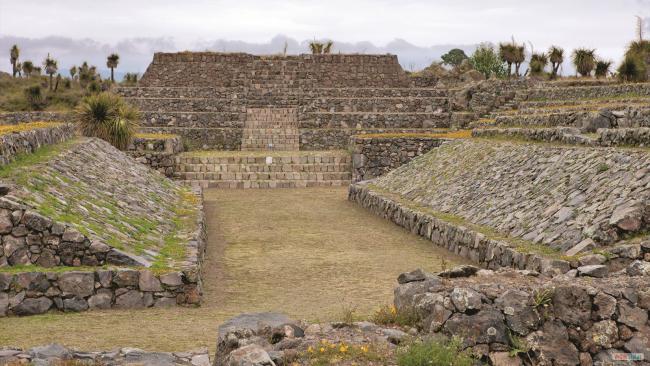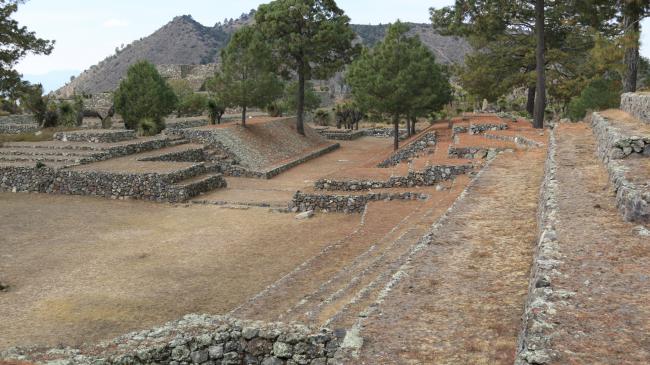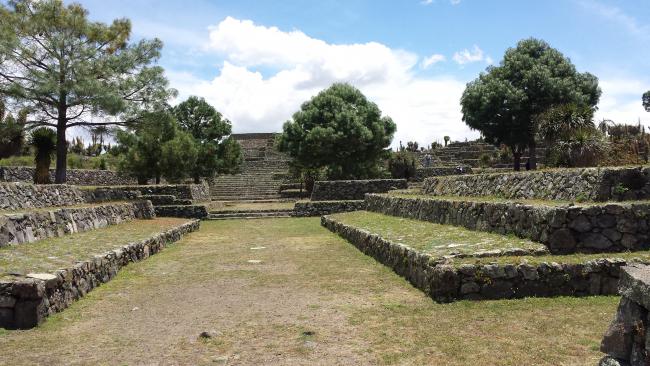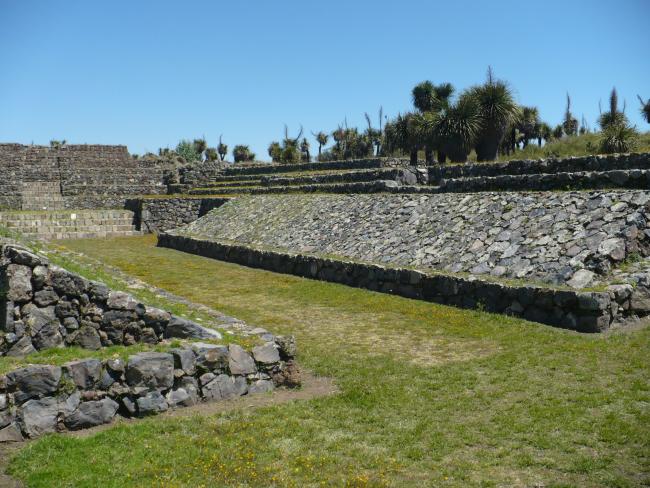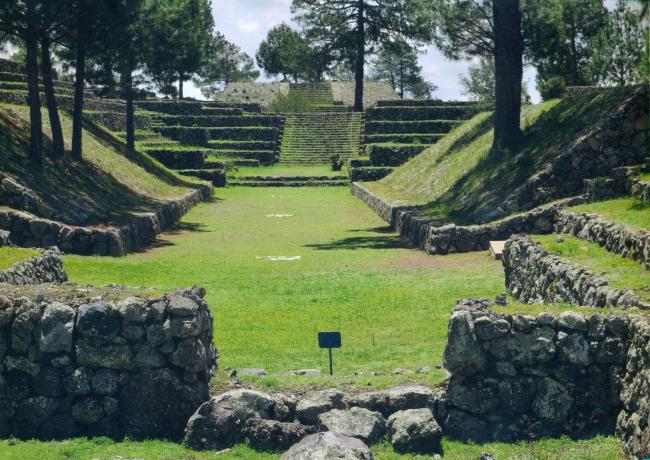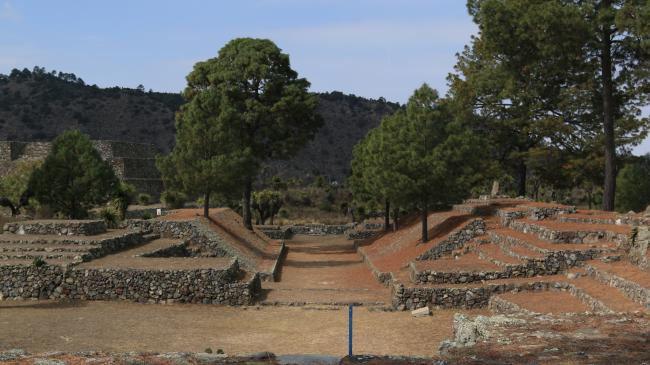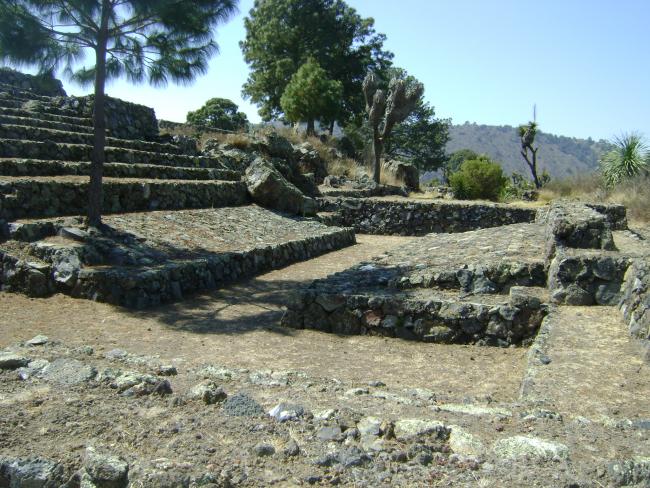
Juegos de pelota
Estructura
They are large-scale architectural elements consisting of a court, one or more plazas, a pyramid and other elements such as altars. Cantona is the site with the largest number of ballgames discovered.
Ball Court Group 5: This is one of the Cantona type ball games, where it is possible to locate, in addition to the court, two plazas (Plaza I and II) and a pyramid that closes the architectural unit to the east. In front of the pyramid and six meters away is located an altar, the largest of those present in the squares that correspond to the ball game sets.
Ball Court Group 6: This group is one of the oldest and one of the few that form an aligned group. It has only one plaza, a pyramid closing on the north and a small altar.
Ball Court Group 7: Located in the heart of the Acropolis, this group represents the largest, most elaborate and complex architectural unit. The whole complex has an east-west orientation and covers an area of more than 1.7 hectares, measuring 230 m in length and an average width of 75 m.
Ball Game 22: It presents similar characteristics to the existing courts in the rest of ancient Mexico, so it does not integrate characteristic elements of a Cantona-type ball game complex. Ball Court 22 only consists of the closed court in the shape of an I, located in the civic-religious center of its time.
Ball Court Group 23: Locally it is also known as “Microgame”, since the court is one of the smallest known in Cantona. It is an inseparable part of Ball Game Set 7, since besides sharing some architectural structures, they are complementary and form an indivisible unit.



